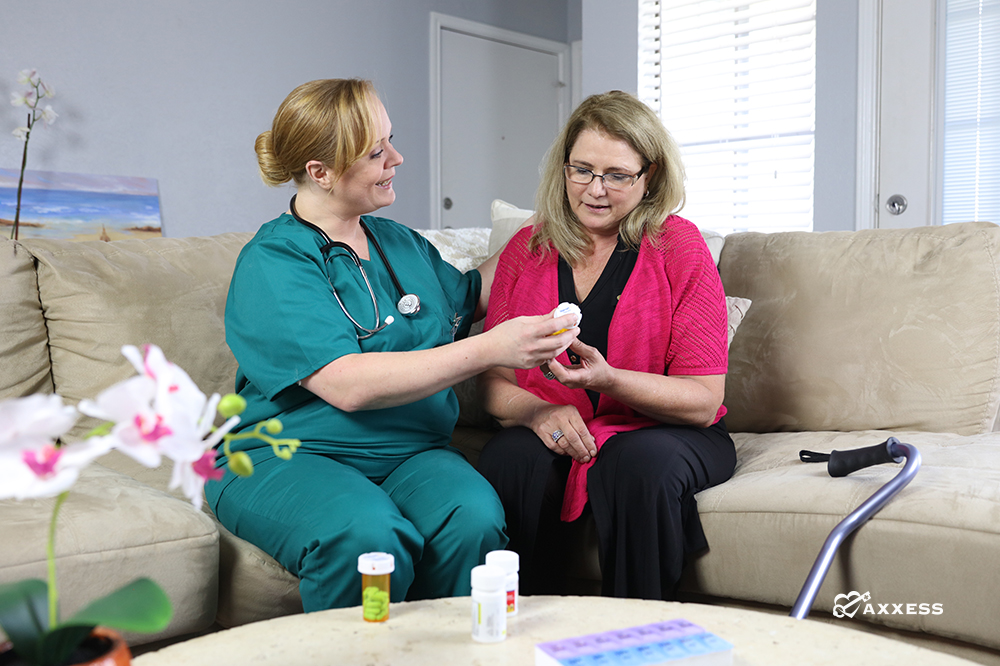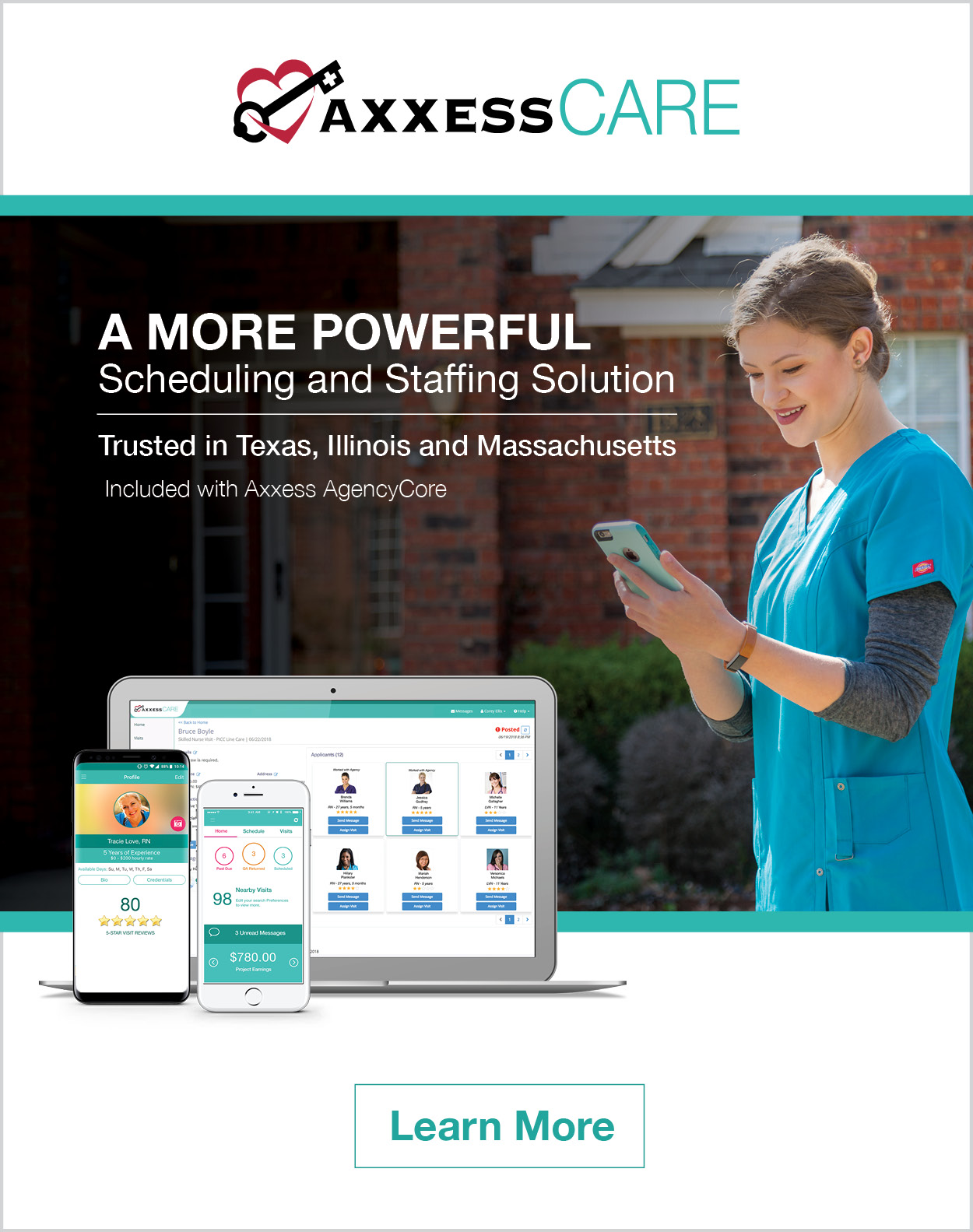
Traditional healthcare in an acute-care setting is governed by a complex set of regulations. The post-acute care sector of healthcare faces an even more intricate web of rules and regulations set by leaders at the state and national levels. It is only the beginning of 2019, but this is a good time to start thinking about the changes that will take effect or begin to take shape in the months ahead for the home health, home care, and hospice sectors.
Home Health
The introduction of new OASIS-D requirements, which became effective January 1, has required much of the attention of clinicians and administrators in home healthcare organizations. Axxess is helping ease the transition with this OASIS-D Resource Page, which includes best practices to put in place now.
It is also vital that providers plan now for the arrival of the Patient-Driven Groupings Model (PDGM). PDGM will be a fundamental change to how home health providers operate because it changes how reimbursement will be calculated. The new focus on improving outcomes, the addition of comorbidity documentation, changing episode payment from the current 60-day model to a 30-day model, and the factoring of referral sources all represent various parts of the new regulations PDGM will bring. It is set to take effect in January 2020.
Home health providers are also waiting to see what will happen with the implementation of the Review Choice Demonstration, originally slated to take effect December 10, 2018. The planned new CMS review of claims pre-payment, post-payment, or having no review at all was delayed to comply with the Paperwork Reduction Act. For now, Review Choice is on hold, but may become a reality later this year for providers in Illinois, Ohio, North Carolina, Texas, and Florida.
Providers also should watch for an expansion of CMS’ Value-Based Purchasing Model (VBPM). The focus on tying payments to outcomes has been in a pilot phase in nine states since 2016. CMS has said it will continue to study the results of the model through the end of 2020. However, that timing could change given the success that has been seen since implementation.
Home Care
The addition of personal care services coverage now available for home care clients through Medicare Advantage plans represents an enormous opportunity for providers. CMS announced it in April 2018, but so far only a few insurance companies are willing to cover personal care services. Given more time to review the CMS guidelines and develop payment models, it is very likely that more insurers will offer coverage through Medicare Advantage plans. Providers should stay alert for new updates from CMS, and insurers that may impact how the coverage is offered.
Staffing is a major challenge for all sectors of post-acute care, and a reform of immigration laws from leaders in Washington could make the issue even more difficult. A review of U.S. census data from the Journal of the American Medical Association found that 17 percent of all healthcare professionals were immigrants. Another study found that nearly 20 percent of the direct care workforce are immigrants. Any change to federal immigration laws could affect the number of available immigrants working in home care, and the ability of organizations to effectively staff for patient care.
One of the challenges home care providers have seen in attracting staff is the ability to pay higher wages. At the end of 2018, the U.S. Department of Labor issued an opinion that reinforced a 2015 decision that makes in-home care workers eligible for overtime and minimum wage protections. More clarity could be needed for providers, given the number of lawsuits across the country over wages and overtime pay.
Hospice
Quality data continues to be a concern for providers, especially the Comprehensive Assessment Measure. With the new Hospice Evaluation Assessment and Reporting Tool (HEART) on the horizon, providers have additional concerns about quality measures that are in effect now and in the future. CMS has not offered any real clarity on the timeline for implementing the new HEART assessment. There are groups working on refining the assessment and identifying the timing for its implementation. The public is left to wait and see while the details are developed. The new assessment would likely change the way the hospice sector reviews and collects patient data and is paid for care.
There were several new laws passed in 2018 that require guidance on their implementation from CMS. The SUPPORT for Patients and Communities Act gives hospice staff members the ability to dispose of a patient’s unused medication. The law was in response to the opioid addiction crisis across the country. The law was signed in 2018, but so far the U.S. Department of Health and Human Services, the Food and Drug Administration, and the Drug Enforcement Agency have not clarified how the law will be put into practice through the rulemaking process.
The amount of scrutiny from the Office of Inspector General (OIG) has increased for hospice providers. OIG inspectors have uncovered inappropriate billing practices and medication management issues, including pharmacies charging Medicare Part D for drugs that the provider should cover. This scrutiny is a reminder of the importance of adhering to regulatory requirements and attention to detail to prevent the financial impact of being out of compliance. The interest from inspectors could intensify in the wake of new laws passed affecting the palliative care sector and its close association with hospice care.
Home healthcare providers should continue to keep an eye on developments at the state and national levels to ensure they are aware of the major regulatory changes on the horizon and the impact on their bottom line, and ultimately patient outcomes. Axxess will continue to help educate you about new changes affecting the industry, with solutions to drive positive patient outcomes, streamline operations, and increase revenue. We regularly offer blogs, on-demand training videos, and intensive workshops to ensure you are fully aware of the latest developments.

